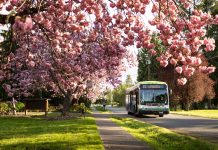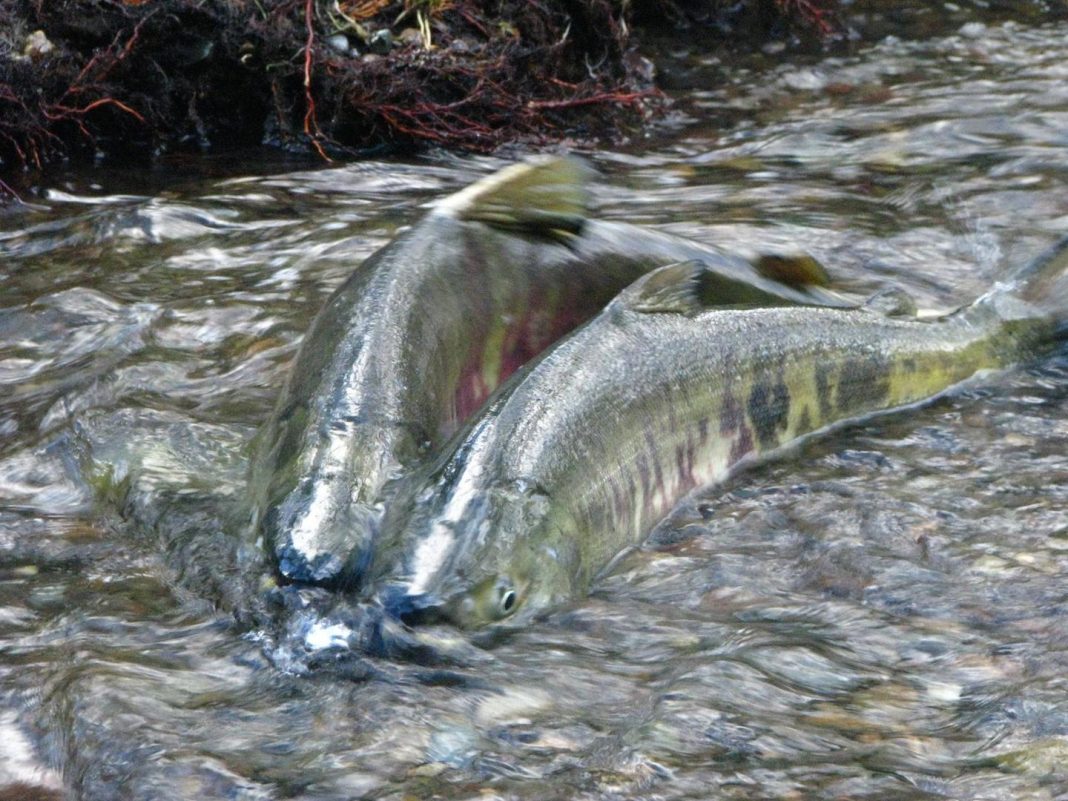As you drive up Highway 101 toward Shelton, it’s easy to miss the turn off for the Kennedy Creek Salmon Trail, but seeing the fall salmon run is an experience recommended for everyone in the area. I met up with Claire Williamson from the South Puget Sound Salmon Enhancement Group to get a sneak peak of what visitors can expect. “It’s surprising how many people grew up in Washington and don’t know about salmon. Salmon are such a key component to our eco-systems in the Pacific Northwest,” she says. This is where the Kennedy Creek Salmon Trail can help.
 More than 15 years ago, the area was restored through a joint effort with Taylor Shellfish, Squaxin Tribe, Thurston County Conservation District, and Washington Department of Fish and Wildlife. The groups wanted to restore the river and provide an educational outlet for the public. As Claire takes me along the trail she explains, “For so long this used to be really dry, really tiny, and even used as an ATV track. I think there was something like 100 fish coming up the river – now there’s something like 20,000.” Visitors are greeted with multiple interpretive signs along their walk, which help highlight important information about spawning salmon and facts on the area.
More than 15 years ago, the area was restored through a joint effort with Taylor Shellfish, Squaxin Tribe, Thurston County Conservation District, and Washington Department of Fish and Wildlife. The groups wanted to restore the river and provide an educational outlet for the public. As Claire takes me along the trail she explains, “For so long this used to be really dry, really tiny, and even used as an ATV track. I think there was something like 100 fish coming up the river – now there’s something like 20,000.” Visitors are greeted with multiple interpretive signs along their walk, which help highlight important information about spawning salmon and facts on the area.
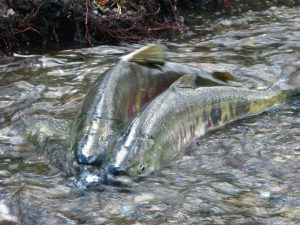
Claire says Kennedy Creek Salmon Trail is a perfect learning experience because of the thriving, environmental diversity. She takes me to the first overlook and shows me a downed tree over the river. Instead of removing debris, the tree provides shade and protection, as well as insects for the salmon to eat. Although I don’t see any salmon in the river yet, Claire assures me they are coming. “Chum are pretty reliable. November 14 seems to be a magical day when they arrive, for whatever reason.” And the same is true for other salmon runs in the area. Sometimes weather can be a concern, like last year when it was so dry all summer. “We were really worried there weren’t going to be fish in here until halfway through November, but they came. And they were all waiting down in Totten Inlet. They were waiting for that water.” As soon as the rains came, so did the fish.
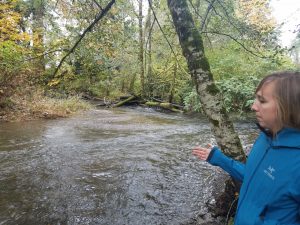
At the next observation spot, Claire explains the spawning process to me in simple terms. I’ll be the first to admit that I wasn’t exactly well educated on the subject, even being a Washington native myself. She says the male salmon come up first to make sure they don’t miss the females, who arrive shortly after. The females begin creating their “redds” or nests. You can often notice their white tails due to the strenuous process. At this point the males circle until the female is ready. As one swims up alongside her, the spawning couple expels eggs and milt. Right away, the female moves upstream to begin digging another “redd.” This is their entire purpose, their one job during spawning season.
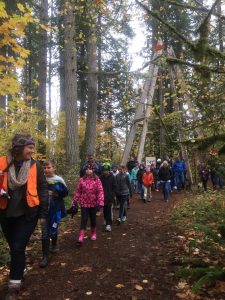
Salmon don’t eat during the spawning process and begin to die quickly afterward, resulting in a stinky, rotting fish smell. But, what smells so awful is actually helpful to the habitat. “That’s my favorite part of it because the decomposition process is so key to the health of the riparian ecosystem,” she says. Claire tells me one dead salmon is equal to about an entire bag of fertilizer and will help vegetation to grow as well as attract bugs for the babies to eat.
About 55 days later, the eggs will hatch and stay under the gravel. Come spring, the young Chum fry immediately begin their journey to the sea. Other species of salmon will remain in their rivers longer. Once they reach the estuaries at the base of the rivers, the salmon can acclimate to the salt water and will head out to the ocean and live for between two and four years. They always find their way back home and will return to the exact same river they came from to begin the process all over.
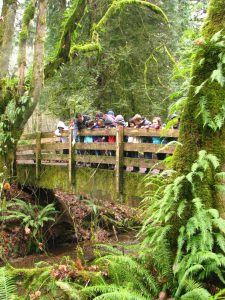
Thanks to the volunteer docents and community partners at the Kennedy Creek Salmon Trail you can come and see salmon spawning. Claire does advise visitors to be respectful of the salmon by keeping voices low and stepping carefully. You don’t want to disturb any of the fish, alive or dead. Also be sure to leave your furry, four-legged friends at home. Dogs are not allowed on the trail because the salmon can carry a harmful parasite.
Do make sure you get out to experience this fascinating part of nature. Claire says it’s so nice to be able to show people something good that’s working. “The Kennedy Creek Salmon Trail is so great because it’s a success story. With salmon restoration it’s not one big project that fixes all the populations. It’s lots of little bandaids over thousands of little cuts.”
You can visit the Kennedy Creek Salmon Trail through November 29. It’s open to the public on Saturdays and Sundays in November plus Veteran’s Day and the day after Thanksgiving. Volunteers are on site during these times to answer questions and provide information. Free weekday guided group tours are also available by reservation only. On November 12th, the trail will host it’s annual fundraiser, Chum, Chowder, and Chocolate from 11:00 a.m. – 2:00 p.m. For more information visit the Kennedy Creek Salmon Trail Facebook page.









